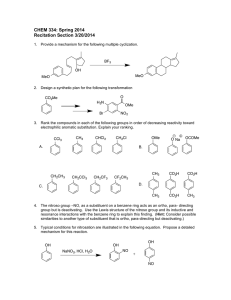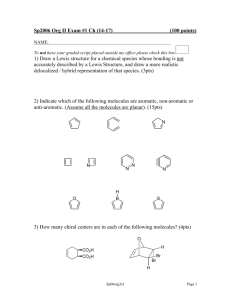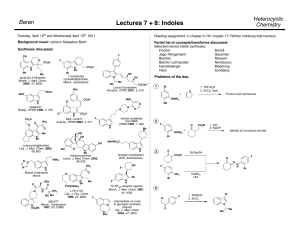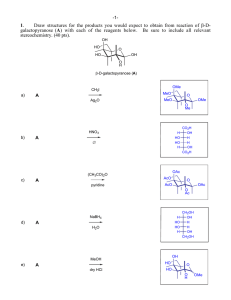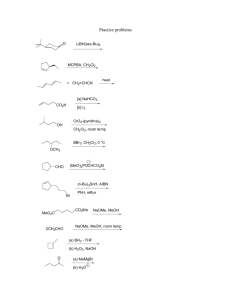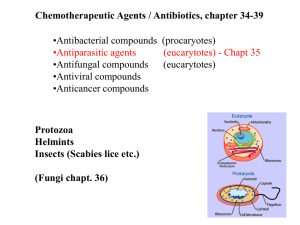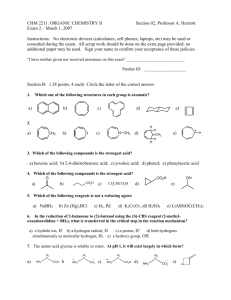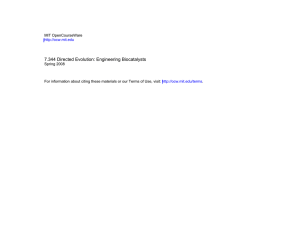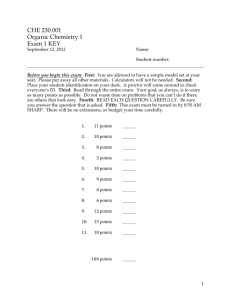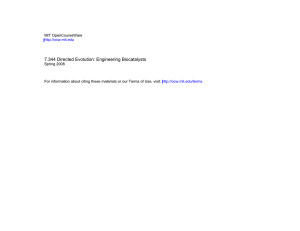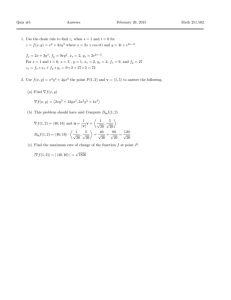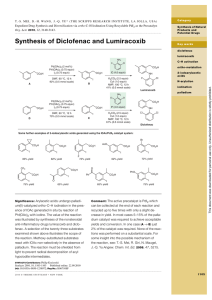Heterocyclic Chemistry – Final Exam June 12th, 2007 Professor
advertisement
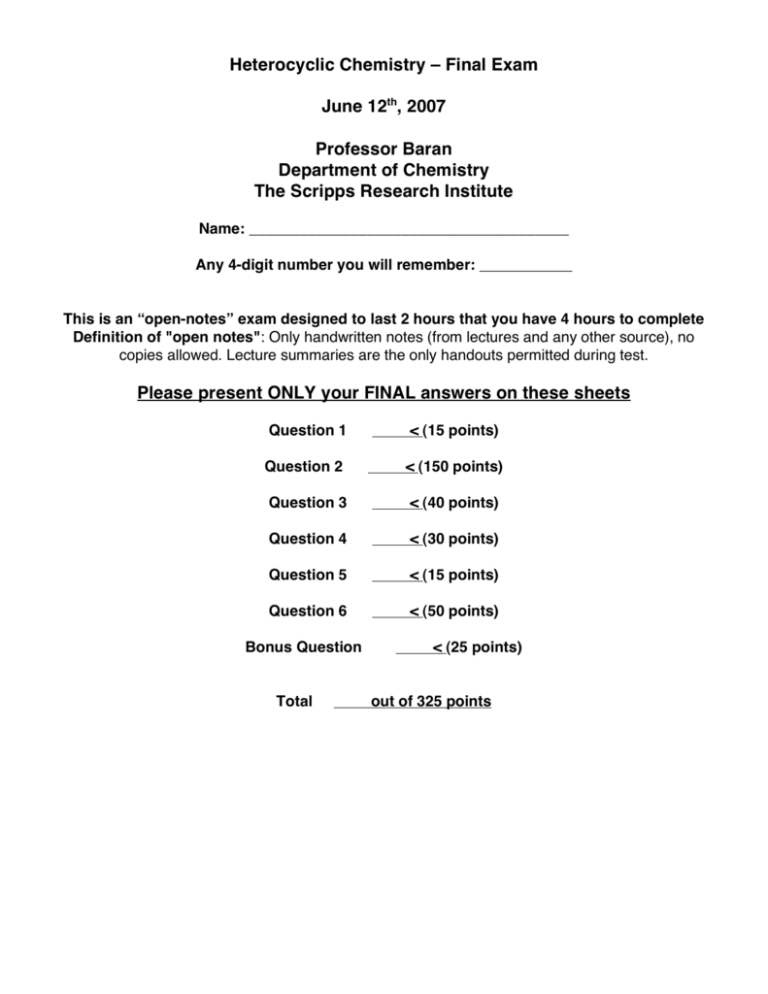
Heterocyclic Chemistry – Final Exam June 12th, 2007 Professor Baran Department of Chemistry The Scripps Research Institute Name: ______________________________________ Any 4-digit number you will remember: ___________ This is an “open-notes” exam designed to last 2 hours that you have 4 hours to complete Definition of "open notes": Only handwritten notes (from lectures and any other source), no copies allowed. Lecture summaries are the only handouts permitted during test. Please present ONLY your FINAL answers on these sheets Question 1 < (15 points) Question 2 < (150 points) Question 3 < (40 points) Question 4 < (30 points) Question 5 < (15 points) Question 6 < (50 points) Bonus Question Total < (25 points) out of 325 points Question 1 (15 points). In Dow AgroSciences development of the herbicide pyroxsulam, they utilized the following transformation to construct the core (Org. Proc. Res. Dev. 2006, 10, 1167). Provide a plausible mechanism for this complex transformation. NH2 N MeO OMe O N OMe EtO MeCN NCS A NH2OH•HCl N N Et3N, EtOH N H MeO N NH2 Question 2 (150 points). Choose 10 compounds from the structure sheet and propose a synthesis for each (15 points each): Question 3 (40 points). Provide a divergent synthetic plan for accessing the following isoxazoles (J. Med. Chem. 2000, 43, 4910). CO2H CO2H CO2H CO2H H2N H2N H2N H2N Me Me MeO EtO CO2H O N OH O N CO2H N O N O N N N N H Question 4 (30 points). Provide a synthetic route and propose a biosynthetic pathway by which exiguamine A is likely formed. Me N O O MeN O H 2N OH O N O NH Question 5 (15 points). Propose a synthesis for the pyrazole starting from a pyridine. NH2 NH2 N NMe Question 6 (50 points). Deduce the structures of the following heterocycles (5 points each). A. (C6H7NO) Obtained by treating 4-chloropyridine with i) NaOMe ii) MeI iii) 185 °C. B. (C15H18N2O2S) Obtained by reacting 2-N-Boc-quinoline with 3 eq. n-BuLi then Me2S2. C. (C16H11NO2) Obtained by treating isatin with NaOH followed by acetophenone in the same pot. D. (C10H16N2) Formed when pyrrole is treated first with Me2NH/CH2O/AcOH, then with MeI, then with piperidine. E. (C9H12OS) Obtained from treating thiophene with N-phenyl-N-methyl-formamide/POCl3 followed by NaOH. F. (C7H8O4) Obtained from reacting methyl 3,3-dimethoxypropanoate with methyl 2-chloroethanoate in the presence of sodium methoxide and heat. G. (C14H18N2O) Formed when indole is reacted with N-methyl-2-pyridone/POCl3, and then treated with aq. NaOH. H. (C5H6O2) Produced by heating 4-phenyloxazole in the presence of but-1-yn-3-one. I. (C16H14ClN3O) Product of treating the following quinazoline N-oxide with methylamine. Cl N Cl N O Ph J. (C5H6N2O) Treatment of 4-bromo-1-methylimidazole with n-BuLi at –78 °C followed by DMF quench gave a product isomeric to one in which the anion resulting from n-BuLi treatment was allowed to warm to 0 °C before quenching with DMF. Both were worked up under acidic conditions. What are the products for each reaction and why do they differ? Bonus Question (25 points): In their quest for new pharmaceuticals, scientists at Pfizer have established the following route to a new medication. Provide the intermediates and final structure of this new medication. C11H10 OsO4, NMO aq. acetone 89% A 8 7 ii) BnNH2, NaBH(OAc)3 DCE 82-86% glyoxal Pharmaceutical 9 i) NaIO4, aq. DCE THF/H2O, 80 °C 60% 6 5 PPM E 4 H2, Pd(OH)2 B HCl:MeOH 88-95% C 2.3 eq HNO3 4.6 eq TfOH 77% H2, Pd(OH)2 MeOH 96% 3 2 D 1 0
